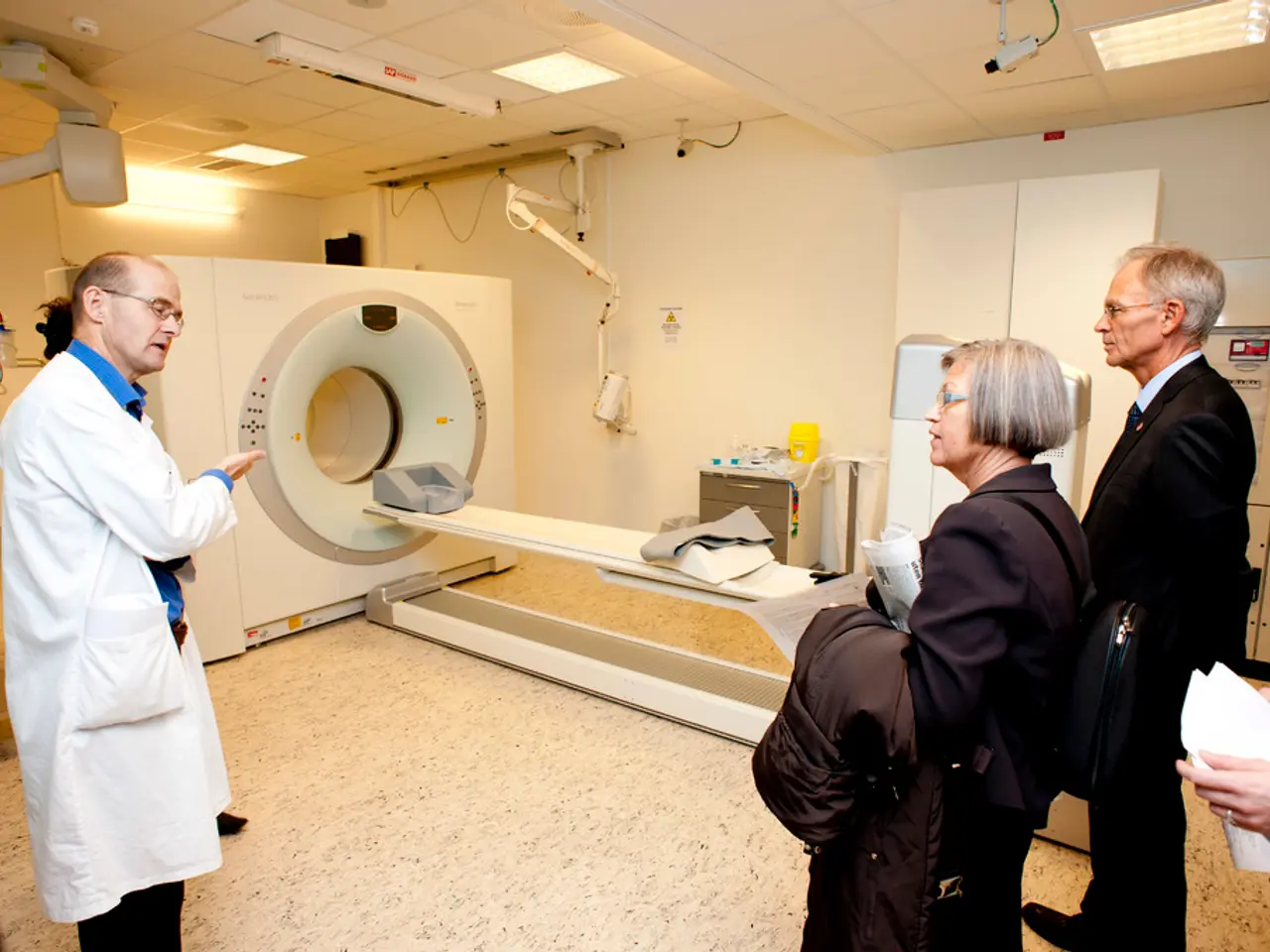Medicare's coverage for radiation therapy: Details on treatment options, expenses, and further information.
In the realm of healthcare, navigating the costs associated with treatments like radiation therapy can be a complex task, especially for seniors relying on Medicare. This article aims to provide a clear overview of the out-of-pocket costs for radiation therapy under both Medicare Advantage and Original Medicare.
Medicare Advantage, an alternative to Original Medicare, offers coverage for radiation therapy through parts A and B, but out-of-pocket costs can vary significantly. Beneficiaries typically pay for these costs through copays, coinsurance, or deductibles, with the specifics depending on the plan.
On the other hand, Original Medicare (parts A and B) provides coverage for both inpatient and outpatient radiation therapy, with set out-of-pocket expenses. Part B covers radiation therapy received as an outpatient in a clinic, with a 20% coinsurance after the annual deductible ($233 in 2022). If a cancer medication taken orally is not covered by Part B, the patient's Part D plan may cover it.
In 2022, the mean annual out-of-pocket maximum for commercial and Medicare Advantage plans for radiation therapy was $4064 and $4661, respectively. It's important to note that these figures can vary based on several factors, including the specific type of radiation therapy, the facility providing the treatment, and the individual's coverage details.
For a more accurate estimate of out-of-pocket costs, consider the following: - Deductible: $233 (Part B deductible for 2022) - Coinsurance: 20% of the Medicare-approved amount for each radiation therapy session - Additional Costs: These might include transportation, medication, or other related expenses
It's crucial to note that the Part A deductible for 2025 is $1,676 per benefit period, while the Part A coinsurance for days 61 to 90 of a benefit period is $419 per day.
Medicare Advantage plans have an annual cap on expenses, and several programs, including Medicare savings programs, Medicaid, and Extra Help, also help cover out-of-pocket costs. For additional financial assistance, Medigap, Medicare supplement insurance, is available for purchase by people with Original Medicare and covers 50% to 100% of out-of-pocket costs relating to parts A and B, including those for cancer treatment.
In conclusion, determining the exact average out-of-pocket costs for radiation therapy under Medicare Advantage and Original Medicare in 2022 can be complex. However, understanding the general trends and guidelines can help individuals make informed decisions about their healthcare coverage. For precise figures, it's necessary to consult specific plans or healthcare providers, as costs can vary significantly based on individual circumstances and the specific radiation therapy treatment.
- Medicare Advantage plans, which are alternatives to Original Medicare, offer coverage for radiation therapy but come with varying out-of-pocket costs, often paid through copays, coinsurance, or deductibles.
- Original Medicare (parts A and B) covers both inpatient and outpatient radiation therapy, with set out-of-pocket expenses, such as a 20% coinsurance after the annual deductible ($233 in 2022) for outpatient therapy.
- In 2022, the mean annual out-of-pocket maximum for commercial and Medicare Advantage plans for radiation therapy was $4064 and $4661, respectively, though these figures can change due to factors like the specific type of therapy, treatment facility, and individual coverage details.
- To get a more accurate estimate of out-of-pocket costs, factors like the deductible ($233 in 2022), coinsurance, and additional expenses for transportation, medication, or related services should be considered.
- Medicare savings programs, Medicaid, Extra Help, and Medigap (Medicare supplement insurance) can help in covering out-of-pocket costs, providing additional financial assistance for healthcare and wellness under both Medicare Advantage and Original Medicare, especially for individuals dealing with conditions like cancer.




